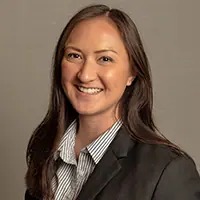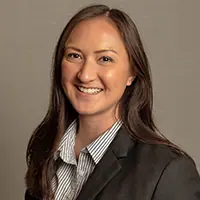Kiah Lau Haslett is the Banking & Fintech Editor for Bank Director. Kiah is responsible for editing web content and works with other members of the editorial team to produce articles featured online and published in the magazine. Her areas of focus include bank accounting policy, operations, strategy, and trends in mergers and acquisitions.

The Bancorp’s Perpetual Motion Money Machine
June 2014 could have been the beginning of the end of The Bancorp.
The Wilmington, Delaware-based bank, founded as a traditional commercial bank by entrepreneur and lawyer Betsy Cohen in 1999, had spent several years carving out a niche business line of private-label banking services and prepaid debit cards.
By 2014, it was one of the biggest players in the prepaid card and payments space. And it was in trouble.
That summer, the Federal Deposit Insurance Corp. slapped the bank with a consent order over weaknesses in its Bank Secrecy Act and anti-money laundering compliance program. Until it resolved those deficiencies, the bank couldn’t establish “any new prepaid card program or issue any new prepaid card product, or establish any new distribution channel for existing prepaid card products.”
The news of the consent order sent the bank’s stock plunging more than 29% after it came out, according to a press report at the time. Bank analysts wrote that they expected the company to spend millions of dollars resolving it, and that it would be a tedious process. “In our experience, a 12- to 18-month time frame to resolve this issue would not be out of the question,” wrote analysts at one investment bank.
That time frame would prove to be wildly optimistic.
And there was more pain to come that year. The next quarter, the bank discontinued its existing commercial loan operations after uncovering millions in unreported loan losses, which delayed several company filings in 2015.
Resolving the consent order took almost six years; the FDIC finally terminated The Bancorp’s 2014 consent order in May 2020. One reason for its extended duration was that regulators held the bank to a high standard of compliance before lifting it, given its heft in the private label space, says Ryan Harris, executive vice president and head of fintech solutions for The Bancorp. In that time, The Bancorp leaned into its work and made compliance one of its strengths.
“The resolution of those various consent orders shaped us into the organization that we are today: highly focused on operational delivery without losses, with strong risk management and a strong culture of compliance,” says Greg Garry, executive vice president and chief operating officer of the bank. “It’s to the point where we now see compliance and risk management not as a cost, but as a competitive advantage. We focus on what compliance is going to look like in five years, not what do the compliance regulations require us to do today.”
Those six years of work solidified the bank’s “advantage business model:” partnering with the biggest payment companies to move increasingly more amounts of money, all the while investing low-cost deposits gained from the partnerships into short, variable-rate specialty loans.
Today, the $7 billion bank is the engine behind some of the top names in fintech, including PayPal Holdings and its subsidiary Venmo, as well as Chime and SoFi Technologies. It focuses on three areas: fintech solutions, specialty finance and corporate operations. In recent years, the approach has stood out as one of the more successful business models there is. Total revenue grew from $197 million in 2017 to $315 million in 2021; the efficiency ratio decreased from 78% to 53% over that same time. Return on equity increased from 15% in 2020 to 18% in 2021; the bank is targeting a long-term ROE of 22%. The Bancorp’s performance in Bank Director’s RankingBanking has increased over time as well: It was No. 54 in its asset class based on 2019 performance, No. 10 in its asset group in 2020 and No. 3 in the top 25 banks for 2021. For 2021’s performance, the Bank Performance Scorecard was renamed RankingBanking and sponsored by Crowe LLP.
The challenge going forward will be maintaining its first-mover advantage in the face of an increasing number of competitors seeking to imitate its banking as a service business line. But for now, in many ways, the only traditional thing about The Bancorp is its innocuous name.
The Bancorp’s prepaid card niche was the precursor to what’s now known as banking as a service. Banking as a service (often abbreviated to BaaS) is “a partnership model in which a financial institution leverages its bank charter to enable one or more [nonbank] financial services companies to offer deposit accounts directly to consumers,” according to Alloy Labs Alliance, a group of community and midsize banks that work together to drive innovation, which assembled a glossary of terms associated with this business line.
Most traditional banks encounter operational risk and complexity in transaction processing, customer fulfillment and customer contact, says Clayton Mitchell, managing principal of Crowe’s fintech practice, who declined to speak about The Bancorp in particular. Sponsor banks in banking as a service add another layer of complexity and potential control issues when they add partnerships, and their partners’ customers.
“The level of control expands,” he says. “I think the complexity comes in with, ‘Who’s responsible for the execution of those operational activities?’ It’s recognizing that regardless of who’s responsible, that accountability always goes back to the bank.”
The Bancorp’s customers are the nonbank financial companies that want to offer some sort of banking service to their customer, often a business or individual. The bank focuses on managing the operational complexity that comes from extensive partnerships with financial technology companies — which is why Bancorp executives have moved away from the “banking as a service” label. The Bancorp pioneered banking as a service, but that term doesn’t appear anywhere on the bank’s website.
“Once you get to a certain scale, companies want partners that will allow them to help control their technology while taking care of the boring stuff,” Garry says.
In addition to managing debit accounts for PayPal Holdings and its Venmo subsidiary, the neobank Chime and SoFi Technologies, it also provides support for companies like core platform Fiserv and Galileo Financial Technologies, according to the bank’s 2022 investor presentation. These are complicated, broad relationships, involving dozens of vendors to support the partnerships and programs, Garry says. The Bancorp works with 45 different call centers, 13 different dispute providers, seven different customer identification program providers and uses 24 different processing languages.
“We take a different approach [from other BaaS banks], which is we’ll take on more operational complexity [beyond offering deposit accounts],” he says. “That level of operational complexity is what allows us to provide the customization to our partners, and frankly, makes it hard to do what we do, the way we do it.”
The bank has become an expert at facilitating payments for its fintech partners. One example of its diffuse invisibility across the economy is that The Bancorp moves funds for money transferring app Venmo, which is backed by PayPal. Neither Venmo nor PayPal has direct access to the payment rails; The Bancorp is the company that issues account and routing numbers, conducts the ACH transfers and disburses all of the real-time payments. It also issues the Venmo debit card.
The bank processed a little over $100 billion of spending on its cards in 2021 — the same amount that the biggest banks in the country process, Harris says. He works in the bank’s South Dakota office and adds that The Bancorp moves more money in one day than the large community bank across the street moves in a year. But one advantage is that even with this massive volume of payments and transactions, the bank is small and agile enough to work creatively with its fintech partners.
“Our core responsibilities and capabilities are ensuring that money moves when it’s supposed to move, every single day that it’s supposed to move,” Harris says.
The costs associated with this kind of an operation — this kind of risk — are compliance, financial crime risk management and the liability that comes with making sure people get their money. The secret to managing these accounts and processing over $100 billion in payment transactions is scalable, automated technology. The Bancorp has created custom internal solutions, and leveraged robotic processes and other automated technologies so that it can handle the same volume at lower marginal costs. But millions of transactions add up.
“What we make on every transaction, while fractions of a cent, allows us to process billions of transactions at the same or minimal cost,” Garry says.
The fintech solutions group also provides the bank with cheap and sticky funding. The majority of the bank’s $6.2 billion in deposits as of the first quarter of 2022 come from card sponsorships, ACH accounts or through other payments.
This is what has allowed the bank to grow deposits while driving down costs: average deposits were $3.8 billion in 2016 with a cost of 30 basis points; by 2021, average deposits had grown to $5.7 billion with a cost of 10 basis points, according to the bank’s January 2022 investor presentation. Low-cost deposits also drive the bank’s growing payments income. Total noninterest income from payments grew from $60 million in 2017 to $82 million in 2021; it now makes up 26% of total income.
Although not a traditional community bank, The Bancorp does engage in some lending. Instead of parking those deposits at the Federal Reserve, The Bancorp makes loans that are short duration and variable rate — just the types of assets a bank would want to hold in a rapidly rising rate environment.
“If we didn’t have the low-cost deposit base, there is no way we could be in the lending businesses that we’re in,” Harris says. “It’s just not even possible.”
The bank’s team of lenders focuses on low credit risk, niche markets that have a small set of competitors: Small Business Administration loans, multifamily loans in certain areas of the country, lease and equipment financing, and lines of credit backed by securities or insurance.
The asset sensitivity of those loans means that even if the bank didn’t lend a single additional dollar and kept recycling the same principal, lending would become more profitable every time the loan was replaced as long as the Federal Reserve keeps increasing rates. Garry points out that returns could be even higher. The bank could expand its risk appetite or increase the duration of its loans. But, he says, “we simply don’t need to.”
That flexibility and choice is essential to controlling asset growth — remaining under $10 billion allows the bank to recoup more debit interchange income. So the bank optimizes its asset mix to grow revenue outside of scale: careful allocation of the loan portfolio, focusing on overall risk-rated returns, even selling off the guaranteed portfolio of loans and turning an interest income business line into a fee one.
“We don’t have to take duration risk in our investment portfolio,” says Garry. “When you make smart choices, you don’t have to chase returns.”
Those two pieces, virtuously supporting each other and scaling as needed, make up the flywheel of The Bancorp’s perpetual motion money machine. It’s how the bank can process millions of transactions a year while driving down its efficiency ratio to near 50% and increasing its return on equity to 18%, all while staying under $10 billion in assets.
“I think what separates them from most is that, at the end of the day, they have a strong efficiency ratio. That’s part and parcel with the scalability of this banking as a service model,” says Frank Schiraldi, managing director of equity research at Piper Sandler & Co., who covers the stock. “It’s only going to continue to strengthen because they’re focused on optimizing the balance sheet and will continue to grow the fee income stream. I think [return on assets and return on investments] are going to continue expanding.”
The Bancorp’s success has not gone unnoticed in the industry: In the past few years, a number of banks have added banking as a service business lines. The earliest banks built out their own lines and forged their own partnerships; increasingly, software companies now offer middleware technology that allows banks to plug-and-play these offerings. This middleware lowers the friction and start-up costs associated with a BaaS program, but it may also lower the returns.
This evolution of BaaS is one reason why The Bancorp is resistant to the label. But the broadness and commoditization of the offering is why they aren’t concerned about the competition. The Bancorp is devoted to the operational complexity that comes with being the back-end banking partner for large neobanks and payment companies; most banks that offer BaaS will not be as committed and may under-invest in staff or resources. Those that are interested in growing this business line will need to expand how they manage different types of banking risk.
“Whether we’re talking operational risk or credit risk, how do banks get a clear vision of where that risk resides? I think part of that requires bankers and these [nonbank] partners to think differently about how we identify and manage risk,” says John Epperson, managing principal of financial services at Crowe. “It’s a new toolbox, it’s a new tool set. It’s a new way of thinking about risk that you can’t necessarily manage in your own bank. I think that is the real friction that continues to exist within the banking as a service models.”
The Bancorp’s success in banking has been less about cheap deposits and good loans — although that is a key aspect of it. Its success comes from its relentless focus on being the best middle-office facilitator and partner for fintechs, which means it has gotten good at doing what Garry calls “the boring stuff.”
The depth, complexity and demands of those relationships, the increasing demand for fintech-bank partnership and the extensive investments The Bancorp has already made in its compliance program fuels executives’ beliefs that those ambitious goals of 22% ROE are well within reach.
“It’s not about our success. Our success is a byproduct if our partners succeed,” Garry says. “If we continue to focus on partners first — and being a true partnership and not just a provider of services — that’s where the success comes from over time.”
Kiah Lau Haslett is managing editor of Bank Director.



